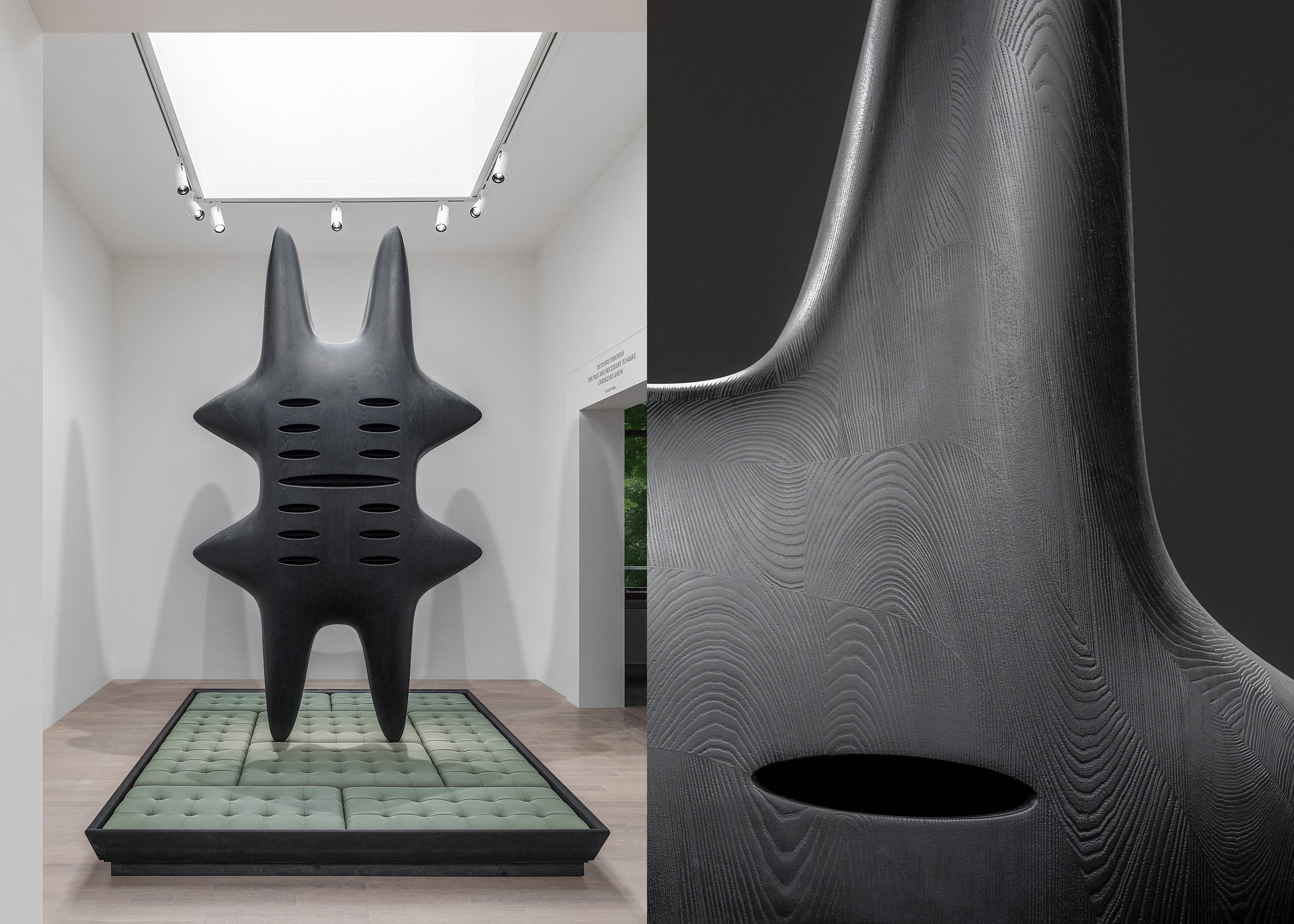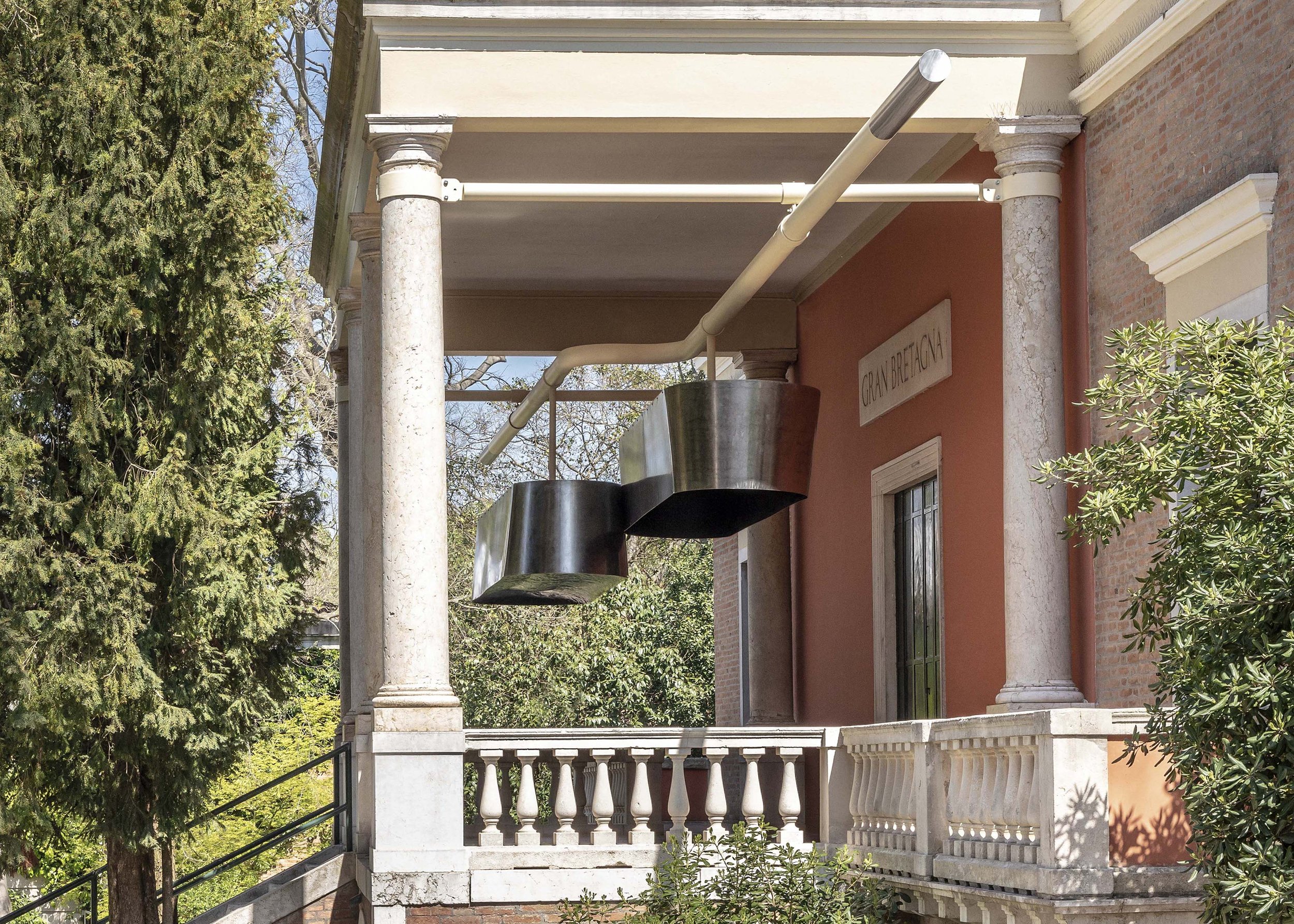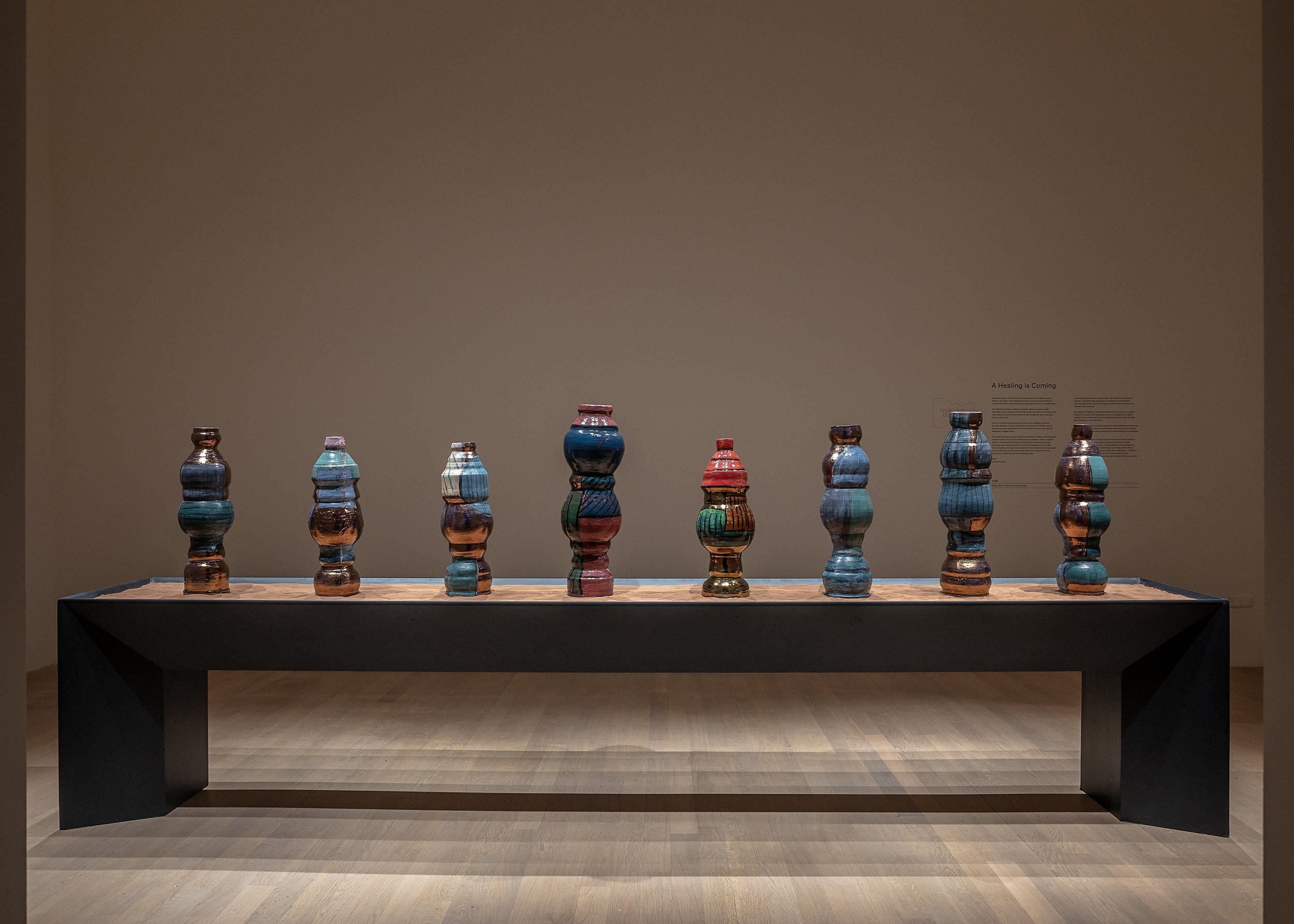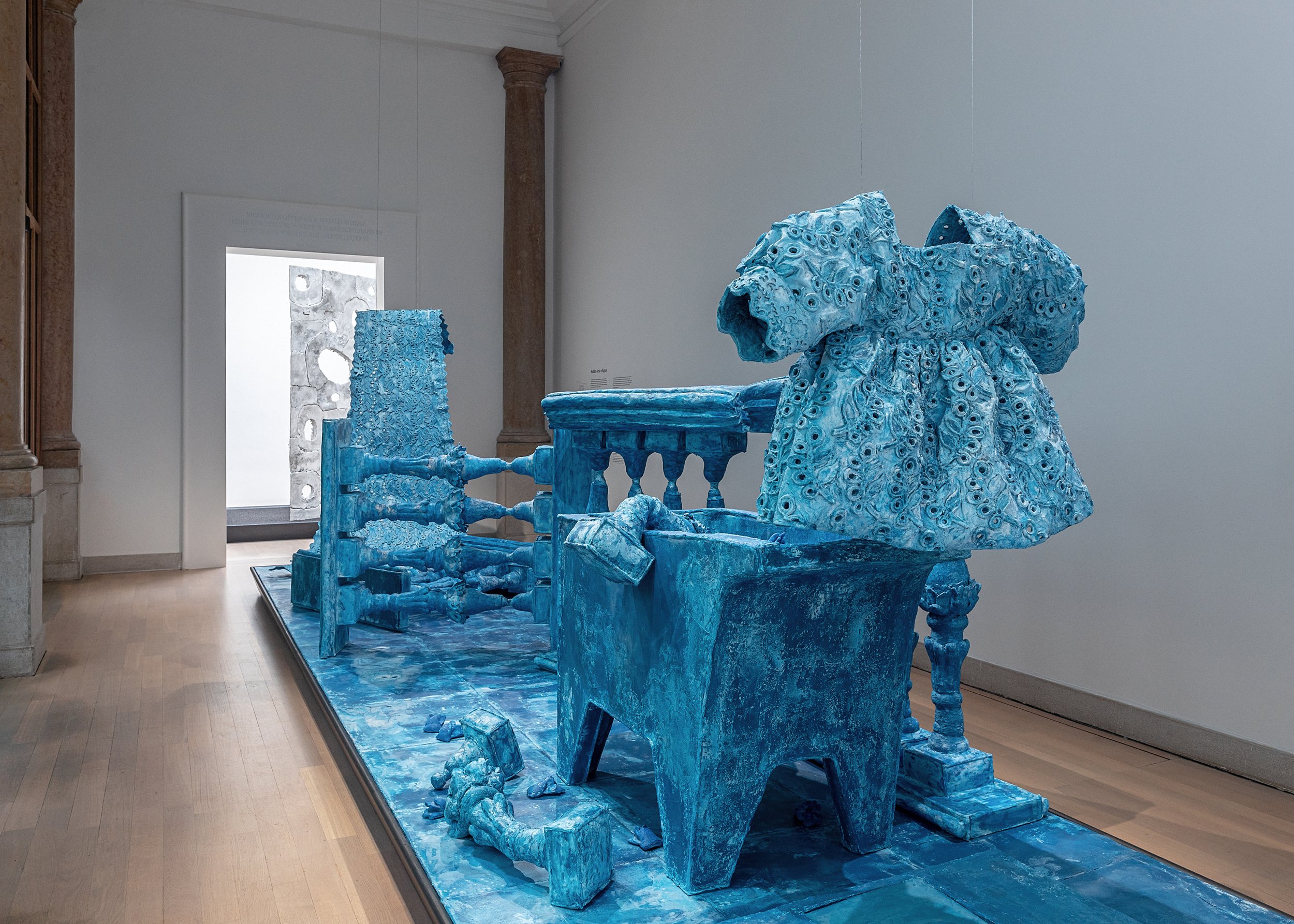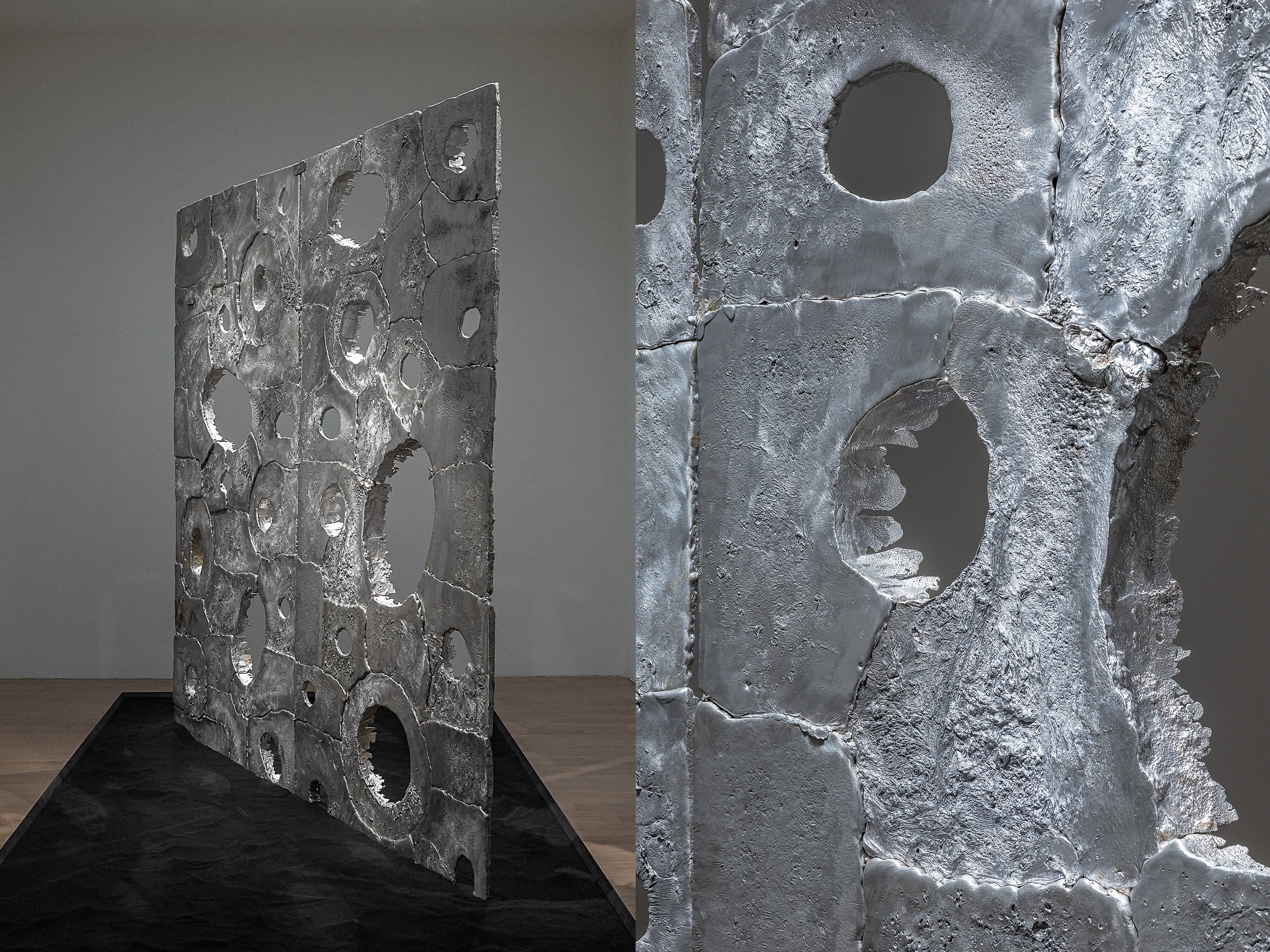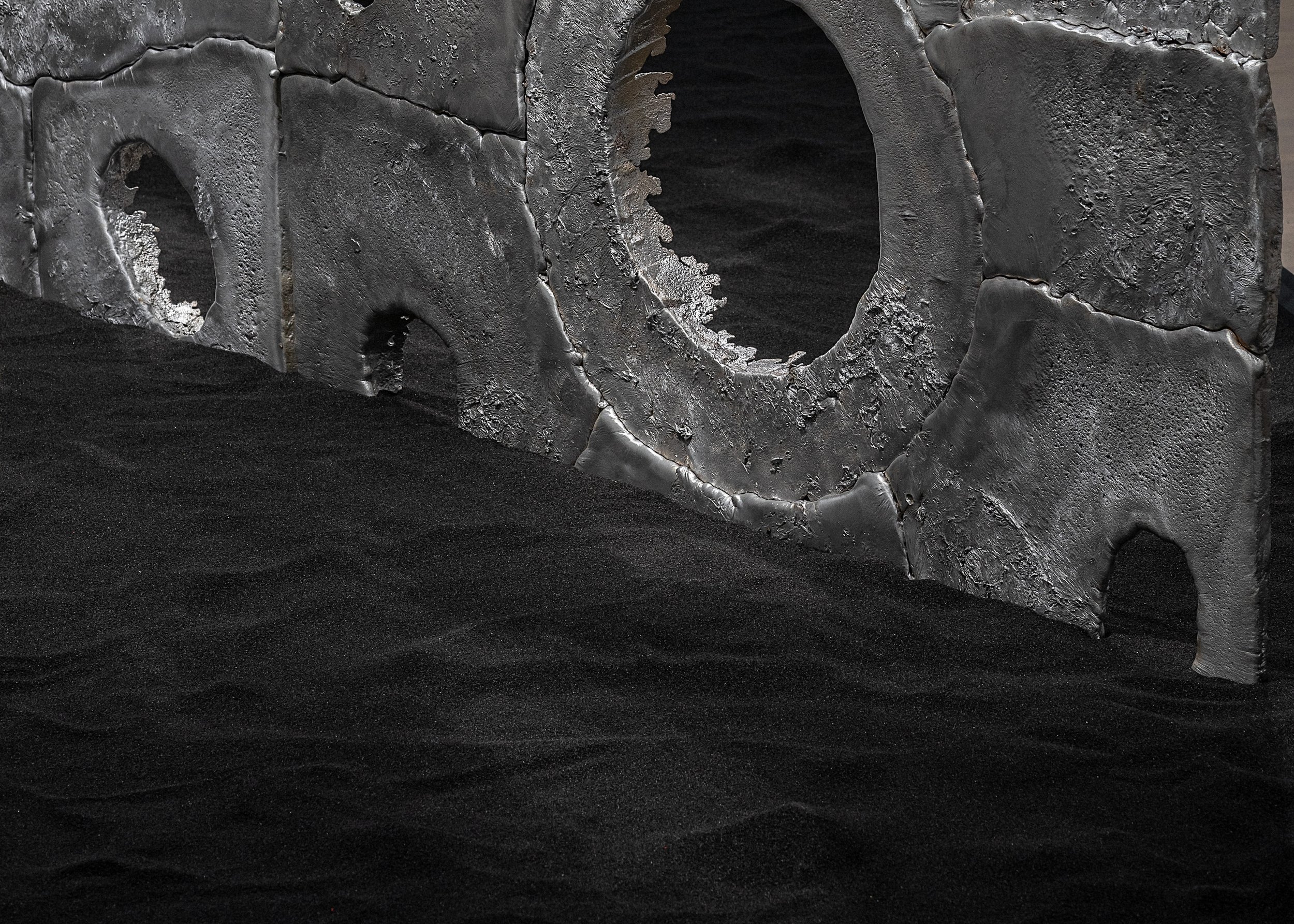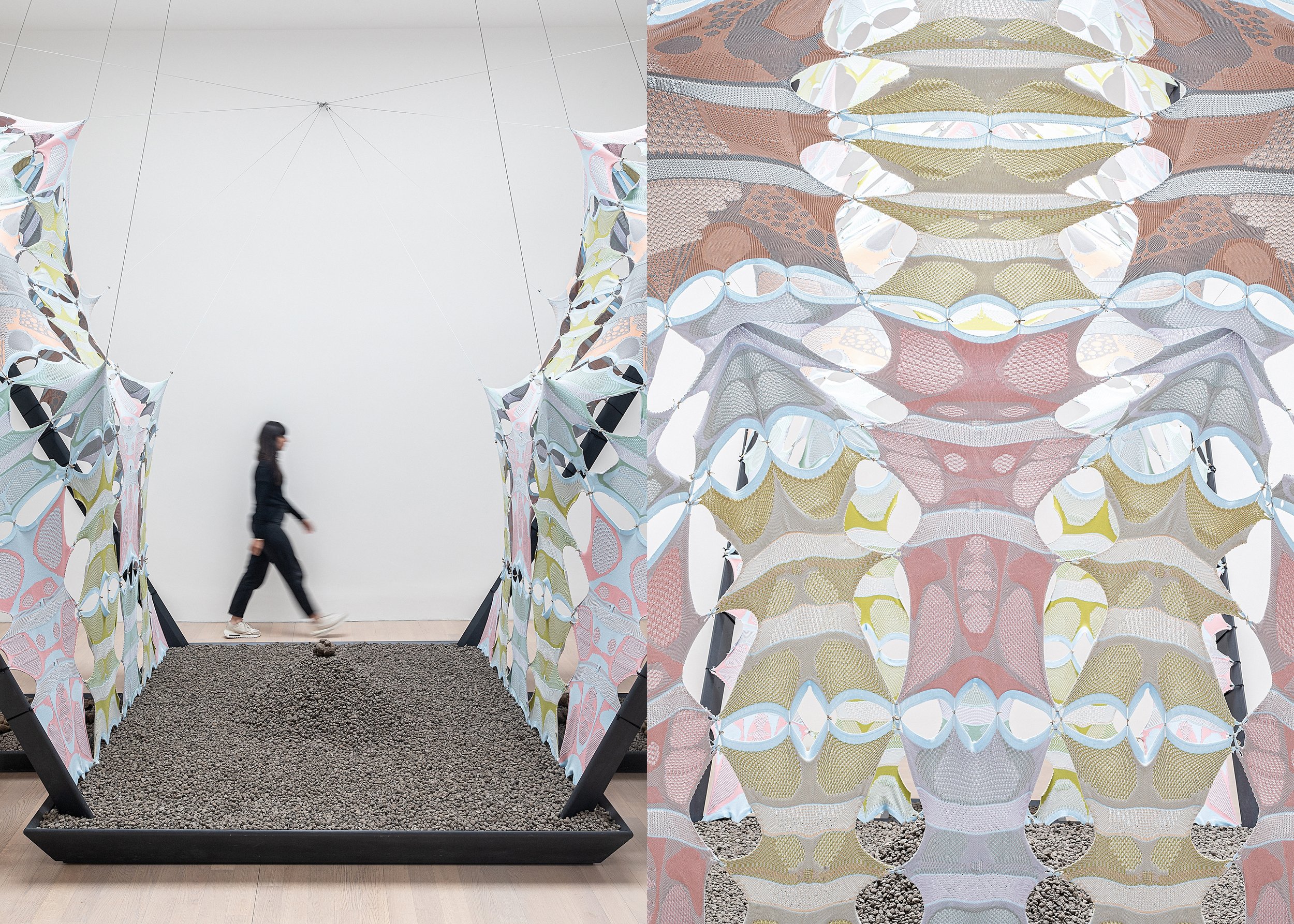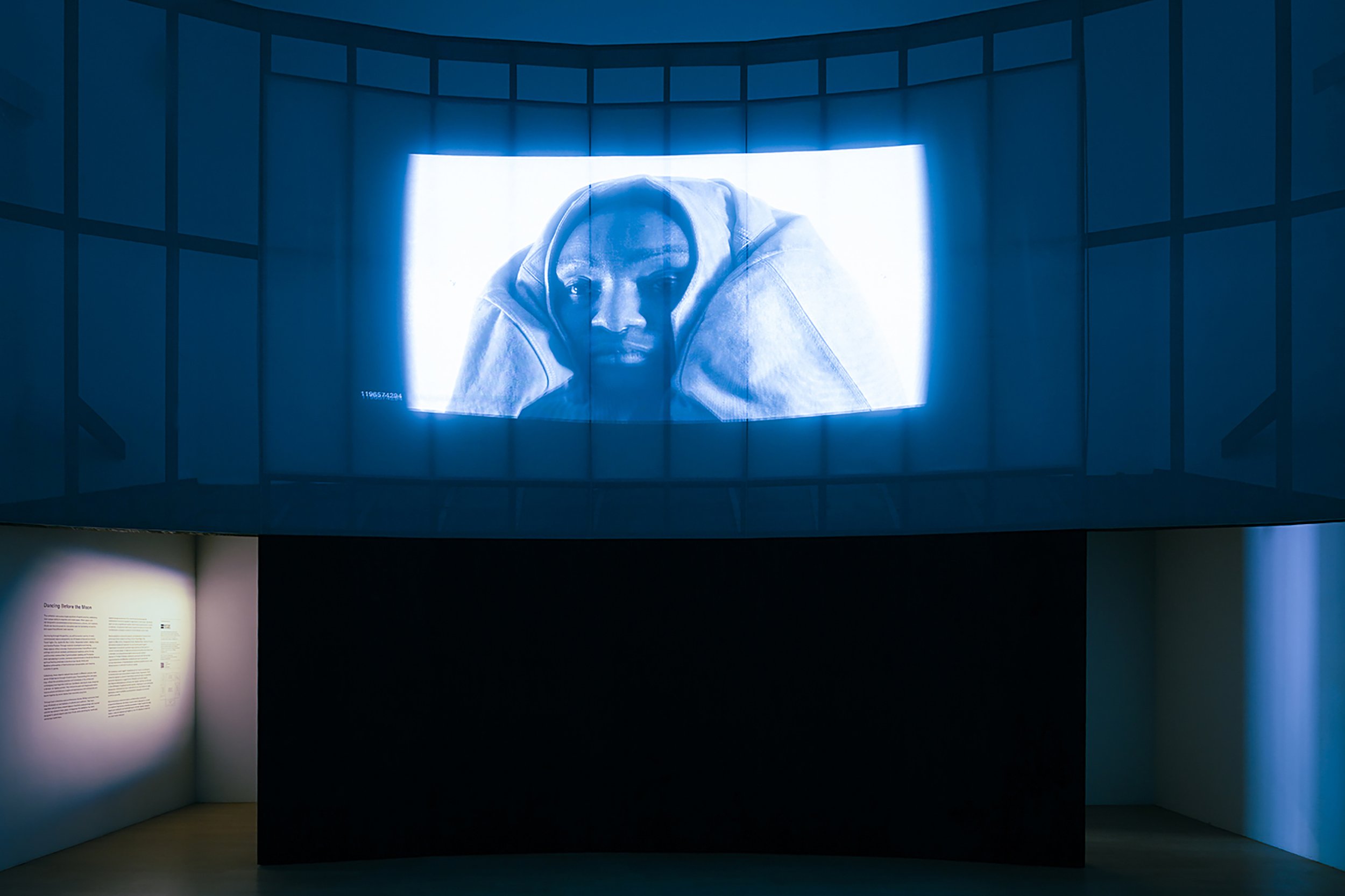Dancing Before the Moon
British Council
Date: 2023
British Pavilion, Venice, Italy
A landmark exhibition at La Biennale di Venezia’s 18th International Architecture Exhibition that centres rituals as a way of making space
Journey through the film of the full exhibition.
Film: John Ingle © British Council
Visual Identity: TEMPLO
‘There is a reason, after all, that some people wish to colonize the moon, and others dance before it as an ancient friend,’ James Baldwin noted in No Name in the Street, his 1972 reflection on the Western Black experience in Europe and America of the 60s and early 70s.
Baldwin's ancient friend is the guiding force behind Dancing Before the Moon, the exhibition at La Biennale di Venezia’s 18th International Architecture Exhibition. Dancing Before the Moon celebrates how Britain's diasporic communities through their active occupation of space and everyday ritual acts – like dance and worship – help to construct the supportive framework of contemporary British life.
Curated by Jayden Ali, Joseph Henry, Meneesha Kellay, and Sumitra Upham, the pavilion displays six large sculptures by emerging artists and architects and a new film directed by the curators themselves. As well as JA Projects’ Director Jayden Ali, who contributed to the above, the studio was also responsible for the exhibition design.
Installation views of Dancing Before the Moon
Photos: Taran Wilkhu © British Council
Through their collections and architectural choices, British institutions have long influenced our perceptions of cultures and traditions. They have rewritten and, at times, erased objects’ ritualistic underpinnings and inserted colonial narratives in their place. In response, this exhibition has been designed to uphold the objects and rituals of diaspora communities in architectural space, while elevating the hands and voices that made them.
The artworks unearth everyday acts acknowledging rituals from different global settings: architecture and textile traditions in Cherokee and Yoruba culture; Hindu and Buddhist belief in the afterlife; outdoor washing in Angola; healing spiritual practices in the American south; Jamaican dominoes in Nottingham; and the craft of Trinidadian steel pan drum-making and Cypriot outdoor cooking.
Installation views of Dancing Before the Moon
Photos: Taran Wilkhu © British Council
The spatial layout situates each artwork at the centre of each of the pavilion’s five peripheral rooms and within its portico. At the core of this idea is the empowering act of occupation, that by simply being in a space one can change its very nature. These objects fill the void to challenge historic power dynamics whereby the contribution of the Black and Brown communities in Britain, due to their diasporic lack of rootedness, is easily ignored. Instead, these objects are large, present, and entrenched, demanding acknowledgment, respect, and renegotiation.
The idea of rootedness is further enhanced by a series of plinths and structural supports that explicitly reference the stories, histories, geographies, and origins of each artwork. The plinths that support each of the internal sculptures were specifically designed to be low lying (emphasising the connection to the ground) and have a ‘filling’ that was able to be developed in close dialogue with the artists. The result is a suite of contextual surfaces that range from Angolan soap to Amazonian bone ash, Buddhist sand to Anglo-Jamaican upholstery. The portico commission is supported by a structure that connects the work to the neo-classical building itself, rooting the sculptures in the context of Britain and its imperial past.
Installation views of the British Pavilion 2023 Main Hall
Photos: Cristiano Corto © British Council
Film still: Issi Nanabeyin
Located at the centre of the pavilion is a film that binds the exhibition together. Combining rarely-seen archive footage from the British Film Institute and new footage shot around the UK, the film observes rituals performed by Black and Brown people in Britain. Archival scenes of dominoes being played in London, as depicted in Franco Rosso’s Dread Beat and Blood (1978), are intercut with similar scenes from a Nottingham pub captured this year, demonstrating how stereotypically British spaces can be transformed via a Caribbean overlay, where dedicated dominoes tables replace more traditional bar counters and Midlands accents merge with patois.
In response to the curators’ ambition for this space to be otherworldly and spiritual, the film is projected onto a full width, shimmering silver screen mounted atop a solid black structure that frames both entrance and exit to the pavilion. The screens’ scale, colour, translucency and offset nature reinforces the film’s ephemeral quality. The film’s base, much like the plinths of the other artworks exhibited, provides context to the work – the cinematic essay on migration situated above the continual arrival and departure of visitors to the pavilion.
The central hall has been designed to facilitate a changing programme of events. To do so the design is purposefully simple – the single large curved silver screen complemented by a single large dark ramp. The result is a viewing experience that requires visitors to look up (much like one would look up at the moon) whilst the central area is left empty, able to accommodate different set-ups and happenings as they evolve.
Collectively, the stripped back, yet impactful exhibition design supports an expanded notion of architecture. One that cross-pollinates with performance, craft and other creative disciplines and that is ultimately shaped by people. This installation responds to the wider themes of the Biennale Architettura 2023 - The Laboratory of the Future – inviting audiences to take their lead from non-western geographies where futures built on collaboration, experimentation and equity are prioritised.
The commissioner, curators, and artists were awarded the only Special Mention for National Participation with the jury noting: ‘for the curatorial strategy and design propositions celebrating the potency of everyday rituals as forms of resistance and spatial practices in diasporic communities’.
Core Team
JA Projects, AKTII
Credits
Commissioner: Sevra Davis, Director of Architecture Design and Fashion at the British Council
Curators: Jayden Ali, Joseph Henry, Meneesha Kellay and Sumitra Upham
Contributors: Yussef Agbo-Ola, Jayden Ali, Mac Collins, Shawanda Corbett, Fredwave, Madhav Kidao, Adenike Oke, Nathalie Pitters, Sandra Poulson, Harkaran Singh and Oscar #Worldpeace
Visual identity: Templo
With the kind assistance of JA Projects and Sound Advice
Particulars
Client: British Council


